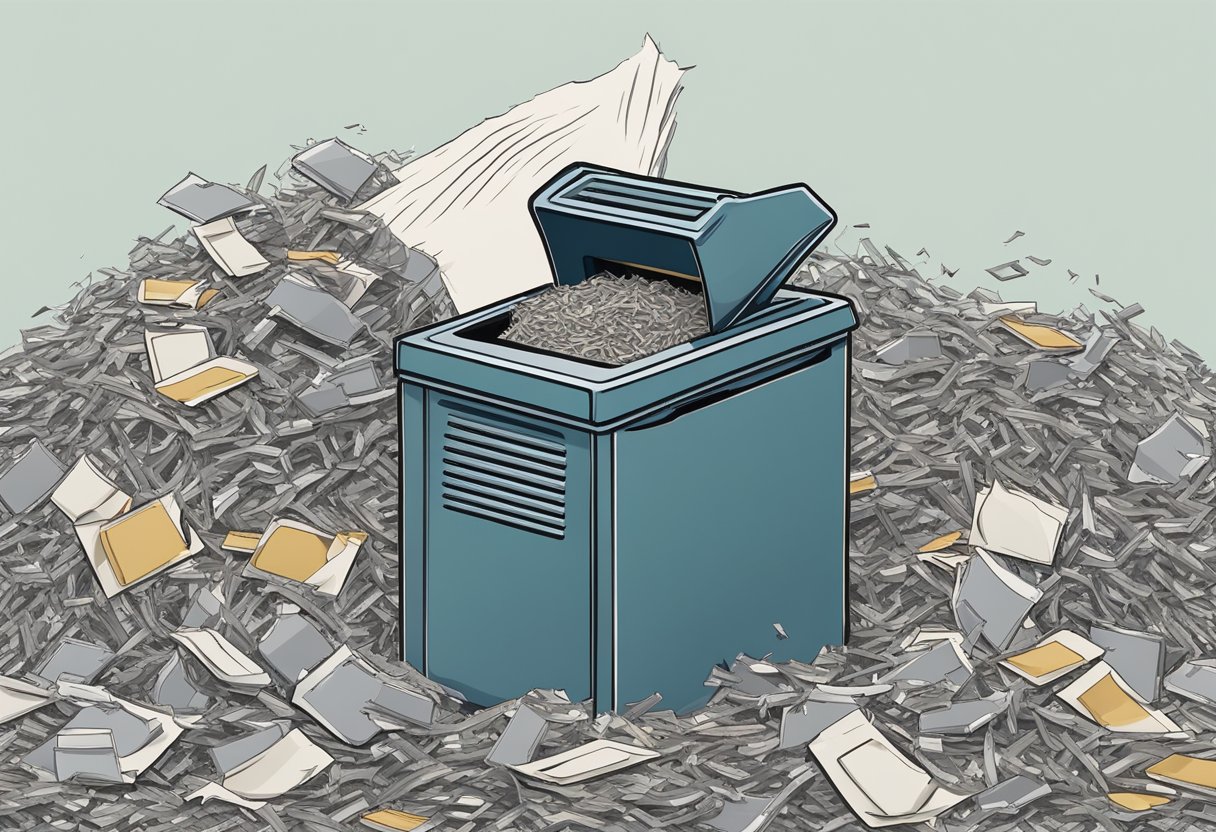Credit card debt can loom over one’s finances like a dark cloud, presenting a formidable challenge that many struggle to overcome. It’s a widespread issue, with numerous individuals seeking viable paths to financial freedom. Gaining a solid understanding of this debt and the various relief options available is crucial to developing a strategic plan to eliminate it. Beyond just paying down balances, savvy individuals can unveil a mix of approaches that turn the tide on overwhelming credit card debt, including debt consolidation and negotiation tactics that can lead to more manageable payment plans or reduced overall debt.

With the proper knowledge and tools, anyone can set in place powerful strategies aimed at reducing their credit card debt to zero. It’s not just about cutting expenses; it’s about laying out smart financial goals and employing a methodical approach to payment that exploits the weaknesses in high-interest debt accumulation. By prioritizing debts, restructuring via consolidation loans, or exploring hardship programs, diligent cardholders can navigate their way out of debt. Including preventive measures ensures a sustainable, debt-free future.
Key Takeaways
- Understanding credit card debt is essential for effective management and elimination.
- There are strategic approaches to reduce debt, including consolidation and negotiation.
- Preventive strategies are crucial to maintain long-term financial health and avoid future debt.
Understanding Credit Card Debt
Credit card debt occurs when an individual uses a credit card to make purchases and does not pay off the full balance each month, consequently carrying a balance over to the next billing period. This balance is subject to interest rates, which can significantly increase the overall amount owed.
Interest Rates and Balance Calculations
Credit card companies apply Annual Percentage Rates (APR) to the balances carried beyond the grace period, affecting how much debt accumulates over time. The APR is the annual rate charged for borrowing, expressed as a single percentage that represents the yearly cost of funds over the term of a loan. The daily balance method is commonly used to calculate interest, which involves multiplying the account’s average daily balance by the daily interest rate—the APR divided by 365.
- Example of Daily Balance Calculation:
- Average Daily Balance: $1,000
- APR: 20%
- Daily Interest Rate: ( \frac{20%}{365} ) = 0.0548%
- Monthly Interest: $1,000 x 0.0548% x 30 = $16.44
The Impact of Debt on Your Credit Score
A credit score is a numerical representation of a borrower’s creditworthiness. Credit card debt can affect this score in several ways, most notably through credit utilization, which is the ratio of an individual’s credit card balance to their available credit limit. High credit card balances can lead to a higher credit utilization ratio, which may negatively impact credit scores, as it suggests to lenders a possible overreliance on credit and potential difficulties in managing debt.
- Credit Utilization Rate Factors:
- Current Total Balance: $5,000
- Credit Limit: $10,000
- Utilization Rate: ( \frac{5,000}{10,000} ) x 100 = 50%
It is essential to understand how credit card debt works to manage one’s finances effectively and sustain a healthy credit score.
Strategies for Debt Reduction
Reducing debt requires a well-organized financial plan and a strong commitment to follow it through. The strategies presented here focus on practical steps that can help individuals not only reduce their debt but also avoid accruing more in the future.
Creating a Budget and Cutting Expenses
Establishing a budget is the foundational step in debt reduction. It involves a thorough review of one’s income, expenses, and savings to identify areas where costs can be minimized. A successful budget separates needs from wants, prioritizing essential expenses and reducing discretionary spending. There are techniques and tools that can simplify this process, such as using spreadsheets or budgeting apps. Cutting expenses might entail negotiating lower rates on bills, removing unnecessary subscriptions, or opting for more cost-effective alternatives in daily spending.
Debt Snowball vs. Debt Avalanche
When it comes to payment strategies, two popular methods stand out: the debt snowball and the debt avalanche. The debt snowball method motivates by focusing on paying off the smallest debts first, regardless of interest rates. This approach gives psychological wins that can boost motivation to continue paying down debt.
By contrast, the debt avalanche method prioritizes debts with the highest interest rates, potentially saving more money in the long term. Financial planning using the debt avalanche approach requires steadfast focus, as it typically takes longer to see the initial debts fully paid off, but it is more cost-effective over time.
Deciding between these strategies depends on an individual’s personal financial situation, their financial planning goals, and what they find most motivating in their journey to becoming debt-free.
Debt Consolidation and Relief Options
Finding the right strategy to manage credit card debt involves understanding the different financial instruments and programs available. Consolidation and relief options can reduce the interest burden and help organize debts for a more strategic pay-off plan.
Balance Transfer Cards and Offers
Balance transfer credit cards can be a powerful tool in debt management. These cards typically offer a 0% introductory offer for a set period, allowing individuals to transfer balances from other credit cards and consolidate multiple debts into a single payment. This introductory rate provides an opportunity to pay down the principal balance without accumulating additional interest charges. However, one must be aware of the rates after the promotion ends and transfer fees that might apply.
Debt Management Plans and Hardship Programs
Debt management plans (DMPs) are structured by credit counseling agencies to aid consumers in paying off their unsecured debt. Under a DMP, multiple debts are combined into a single, more manageable monthly payment, often at a reduced interest rate. Enrolling in a DMP may also stop collection calls, and waive late fees.
For those experiencing financial hardship, many credit card issuers offer hardship programs. These programs can lower monthly payments, reduce interest rates, or even pause payments temporarily. Eligibility for credit card hardship programs typically requires proof of financial struggle, such as a job loss or medical emergency. It’s crucial to reach out directly to credit card issuers to inquire about these programs.
Preventing Future Debt

To ensure a debt-free future, one must adopt smart financial habits and set clear, achievable financial goals. Both of these methods represent proactive steps to maintaining healthy finances.
Smart Financial Habits
Budgeting is the cornerstone of personal finance management. Creating and sticking to a budget that accounts for all spending is critical. They should categorize their expenses and prioritize needs over wants. For example:
- Essential: Rent, groceries, utilities
- Non-essential: Dining out, entertainment
Using tools such as NerdWallet can offer insights and help track one’s spending patterns. Moreover, people must regularly review their finances, adjusting their budget as needed to prevent overspending.
Setting and Achieving Financial Goals
Effective goal-setting utilizing the SMART goal framework—specific, measurable, achievable, realistic, and time-related—is vital for preventing debt. Financial goals require clear deadlines to foster accountability. For instance:
- Save $1,000 for an emergency fund by June 30, 2024.
- Reduce dining out expenses to $100 per month to direct savings into debt repayment.
By setting explicit and time-bound objectives, individuals can make informed decisions that keep future debt at bay and progressively work towards financial independence.
Frequently Asked Questions

When confronted with credit card debt, individuals often seek clear and accurate information. These FAQs provide insights into resolving and managing debt effectively.
What are legitimate methods for credit card debt forgiveness?
Legitimate methods for credit card debt forgiveness include hardship programs offered by credit card companies, debt settlement negotiated with creditors, and, albeit rarely, debt cancellation in cases of qualifying disability or death. It is important to remember that forgiven debt can be taxable.
How can I negotiate credit card debt reductions with my creditor?
Individuals can negotiate debt reductions by communicating with their creditor to discuss their financial situation. One can request reduced interest rates, payment plans, or lump-sum settlements. Professional advice or assistance from a credit counseling agency may enhance negotiation effectiveness.
Are there any government programs available to help with credit card debt?
Currently, there are no direct government programs specifically designed to aid with credit card debt. However, there are government-approved organizations that offer free credit counseling and can guide individuals in debt management plans that can facilitate the journey to becoming debt-free.
What strategies exist for managing and paying off large credit card debts?
To handle large credit card debts, one can implement various strategies such as creating a budget, cutting expenses, and using either the debt avalanche or snowball repayment method. Choosing a strategy depends on one’s financial situation and preferences.
Can credit card debt impact my credit score, and how can I prevent it?
Credit card debt can significantly affect credit scores, especially if payments are late or missed. Maintaining timely payments, keeping balances low, and managing credit utilization effectively can prevent negative impacts on credit scores.
Is it possible to settle credit card debt for less than I owe without paying?
It is possible to settle for less than the full amount owed through debt settlement negotiations. Creditors may accept a reduced amount as a full settlement if they believe it is the most they can feasibly collect. Debt settlement, however, may carry consequences such as negative credit report entries and potential tax liabilities on the forgiven amount.